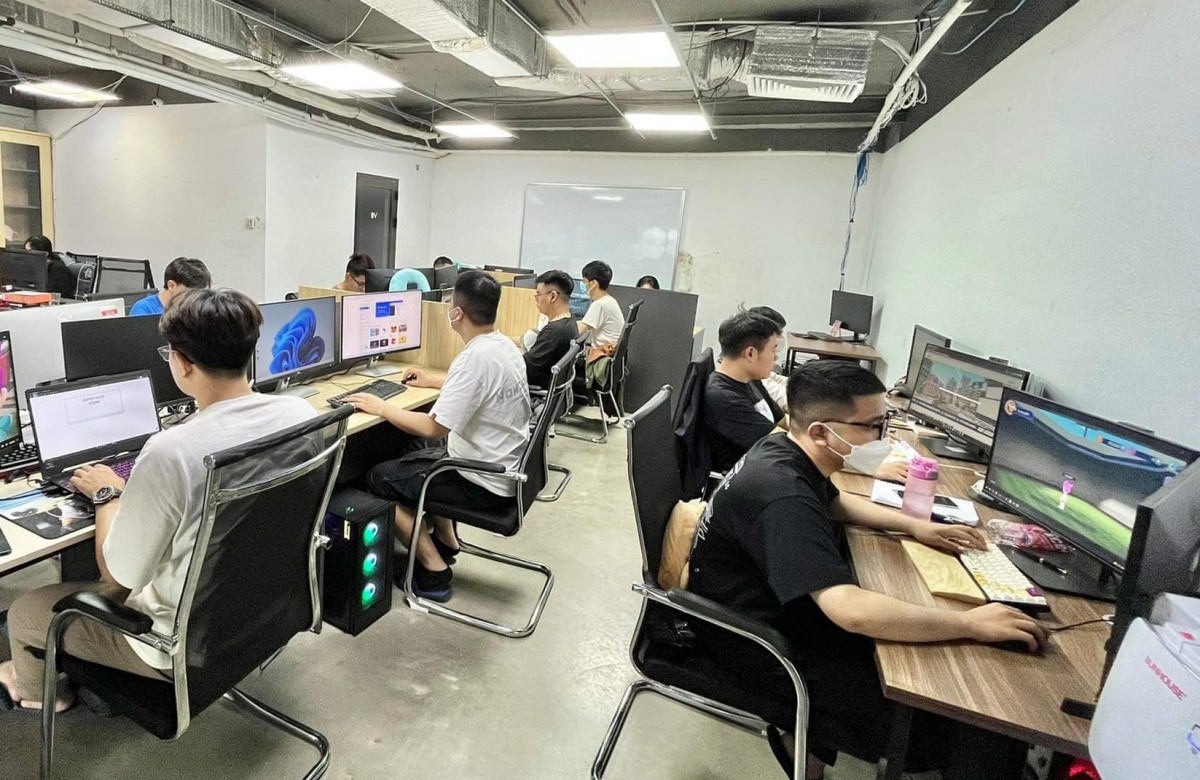
The educational sector has been ordered to produce 50,000-100,000 workers in AI (artificial intelligence), blockchain and semiconductors for the next few years. The question is how to develop human resources quickly to seize the once-in-a-lifetime opportunity to master new technologies, while technologies change rapidly.
Nguyen Thanh Binh from RMIT, said one of the weak points of Vietnam in preparing workforce is the lack of foundation. "The ‘foundation’ here means ‘research’."
The question raised for universities is what their research should focus on when technologies develop rapidly. They need to conduct research together with businesses, which means recognizing the problems of businesses and the entire economy, and finding answers to the questions.
Binh believes that students don’t need three or four years to finish studying for a major. It would be better to design education models which require a shorter time. For example, Vietnam needs a model which produces 100,000 workers in AI and blockchain within six months.
“There is no measure to train 100,000 students with latest technological knowledge in 3-4 years. In this case, the answer is creating new education products and models reserved for those who are working, and a training process lasting six months only,” Binh said.
Vu Anh Tuan from the HCM City Computer Association said trainers always have to keep up with technology. When Intel decided to set up a semiconductor plant in Vietnam, it had to spend one year to recruit workers and send the workers abroad for in-depth training.
However, not all businesses can do this. Therefore, the best solution is organizing short-term training courses for engineers with 5-10 years’ experience. The engineers working in related fields can become qualified after one year of training.
Le Khanh Duy from the HCM City University of Natural Sciences, said one of the difficulties in training new technologies in Vietnam is the lack of machines used in teaching.
The solution applied by many schools is seeking support from international professors, cooperation with other schools, and sharing the same infrastructure, which allows students to practice with the latest technologies and access knowledge at an international level.
Duy noted that Vietnamese students have the ability of grasping knowledge about new technologies very quickly. However, many excellent students study abroad and may not return to Vietnam after finishing studying.
He hopes that there will be policies in private and public partnerships which can help retain talent, so that they stay in Vietnam to research and develop solutions to businesses’ problems instead of studying and working abroad.
Schools and businesses should cooperate to train Vietnamese specialists in Vietnam.
Community education
Meanwhile, Lynn Hoang, Vietnam country director of Binance, thinks that Vietnam should reserve resources for community education.
She believes that popularizing new technologies, including blockchain, to all students in different majors, is important work. That is why Binance Academy is designed to serve the community.
In order to do that, training establishments need to find the real value of training, and those who have demand and passion for research can continue their studies. This requires different ways of approach, from open course store for the community to training courses which end up with tests and certificates, or programs implemented in cooperation with universities and research institutes nationwide.
In Vietnam, Binance has joined forces with over 20 universities in seven cities and provinces to bring knowledge in new technologies to over 5,000 students. All the curricula and lesson plans are designed and presented under the strict supervision of the teaching staff to be sure that they suit students.
Vietnam now has 1 million information technology engineers, and the government has requested the Ministry of Education and Training to produce 50,000 semiconductor engineers to satisfy demand by 2030.
Le My